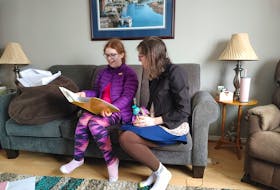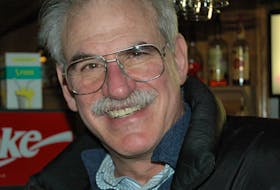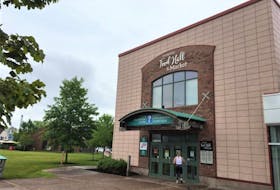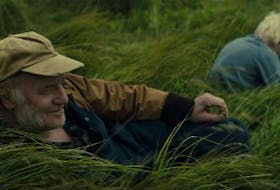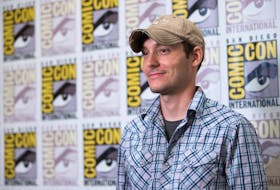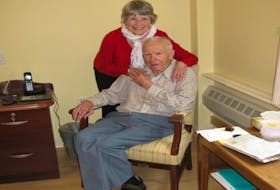ANNAPOLIS ROYAL, N.S. - Modern technology may finally help find the Acadians.
Soldiers and civilians alike rest just below the surface at the Garrison Graveyard at Fort Anne National Historic Site in Annapolis Royal, but for the more-than 2,000 people buried at the fort, only 232 stones stand. Where the rest are located has never been confirmed.
A Dec. 3 collaboration saw Mapannapolis, the NSCC’s Applied Geomatics Research Group, Boreas Heritage Consulting, and Parks Canada come together for a day of historic proportions – literally. They were searching for the Acadians.
Boreas, an archeological consulting firm based out of Halifax, brought their ground-penetrating radar unit and started looking in a gridded area known by locals as the Saint Jean Baptiste Parish Cemetery with active dates of 1632 to 1755. A monument near the fence on St. George Street notes the cemetery later became the British Garrison Graveyard.
“Boreas Heritage Consulting is going to be doing some ground penetrating radar where we suspect the Acadian cemetery was,” said Ted Dolan as the work was about to begin. He’s Parks Canada's site and visitor experience manager for historic sites in southwestern Nova Scotia.
“We don’t have a whole lot of records detailing the Acadian cemetery that’s part of the Garrison Graveyard at Fort Anne National Historic Site,” he said. “We have a very good idea where it is based on historical drawings and some historical records but this will aid us with our assumptions.”
Aerial Mapping
While Boreas was studying what was under the ground, the Applied Geomatics Research Group from NSCC in Middleton was operating drones to create some 3-D imaging of the cemetery above ground, Dolan said.
“So those two combined we will hopefully have a really good product that will help us with interpretation, that will help us with research, but will also aid us in developing hopefully a really neat product for visitors as well,” he said.
Boreas made a dry run with the GPR and was detecting anomalies immediately.
“So we know we’re going to find stuff. We know we’re going to find graves,” Dolan said. “Are we going to find foundations? We don’t know that but that would be really neat because if we find some foundations it’s going to confirm some assumptions we’ve made about hopefully where the blockhouse used to be on this part of the property, but again, we don’t know.”
He said it’s possible they could find foundations that aren’t from the blockhouse but would inform them about other buildings that may have been here that they weren’t really aware of.
And there was hope, if there was time, to find the front foundation of the Saint Jean Baptiste Chapel.
Dolan said he doesn’t expect the Dec. 3 GPR work will lead to any archeological digs, particularly because Parks Canada tends to not do that in graveyards.
“If we do discover anything unexpected we’ll go from there,” he said.
Where are the Acadians?
Heather LeBlanc is with Mapannapolis, a community organization that maps the county and layers the resulting cartography with information in an easily accessed online site. Her Garrison Graveyard group identified there were 232 standing stones here.
“But it’s very clear there are over 2,000 buried here, so where are they,” she asked. “So we were able to look at this and say we have historical references to where the Acadians might be or where the Black Loyalists might be, but when you can visually look and see this is all empty, where are they? Is that the potential area? So what we’re here to do today with Boreas Consulting and AGRG and of course with the total cooperation and support of Parks Canada, we’re looking. Where are the Acadians?”
Annapolis Royal Mayor Bill MacDonald was on hand for the day’s events and even operated the GPR unit. He described the day as history meeting technology.
“Lifting the veil of a piece of land that has been known to be the grave sites of thousands of Acadians, certainly hundreds of Acadians,” he said. “A monument was installed here a number of years ago. We now have an opportunity using technology to look below the surface and see what lies there.”
Detects Anomolies
Sara Beanlands, with Boreas, said her crew’s work will generate three-dimensional mapping. The radar can reach three metres below the surface and detects anomalies such as differences in soil density and composition.
“If the soil had been taken out as in a potential burial shaft and then redeposited, potentially the GPR can pick up even those types ephemeral features,” she said, adding that clarity depends on the nature of the anomaly itself.
Acadian Alan Melanson, who spent 32 years as an interpreter at Fort Anne, said the radar mapping work is important.
“This is one of the most significant graveyards in Canada because a culture got born in this area – the Acadians,” he said. “And this is one of two recorded Acadian graveyards in this area. There’s Saint Laurent in Bellisle and Saint Jean Baptiste in Port-Royal, right here. When we’re standing here we’re standing on history.”
He said a lot will be learned from the GPR.
“Archeology is the missing factor. We can’t dig up bodies, but we can do the ground-penetrating archeology that will then give us an idea of the people here,” he said. “It goes to one millimetre of precision, so it will tell us where some of the grave sites are located. Then it confirms what we believe from records, from maps. I find that archeology is the arbiter of history. It solves disputes, and I’m very happy that this is happening.”
Two Weeks
Dolan said Boreas will need about two weeks to work on the data.
“By mid-December we should have the data,” he said. “What we do with that data? That will probably take a little bit longer for us to decide. We’re not expecting to be completely gob-smacked and find anything absolutely unexpected, but at the same time we have a very open mind with this today. We really don’t know. A lot of things happened over the course of 350-400 years and not all of our records are very accurate. We’ve got an open mind. We’re hoping it gets us some really interesting results that will help us interpret the site in a more accurate way. If we get something really crazy? Bonus. Well, that’s a great story too.”

